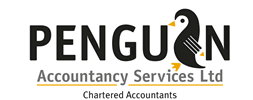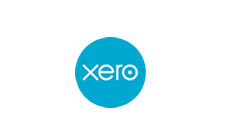The new super-deduction: the devil is in the details
The new super-deduction announced at the 2021 Budget appears very generous on paper. However, the draft legislation shows that there are a number of conditions and drawbacks. What should a company know before claiming it?

A new capital allowance
The Budget contained a measure which the Chancellor said was to encourage businesses to purchase new equipment and grow profits. The so-called super-deduction will be given as a capital allowance (CA) for purchases that meet all the conditions.
Qualifying purchases
To qualify, expenditure must be incurred by a business liable to corporation tax (CT) between 1 April 2021 and 31 March 2023 on new unused plant or machinery. The amount of CAs deduction varies depending on the type of asset purchased:
- for assets that ordinarily qualify for the 18% main rate writing down allowance, the deduction is equal to 130% of the expenditure (this is the super-deduction); whereas
- for assets that ordinarily qualify for the 6% special rate writing down allowance, the deduction for the year of purchase is equal to 50% of the expenditure (referred to as “SR allowance”). For subsequent years the normal 6% writing down allowance applies to the remaining expense
- a special rate applies for expenditure incurred in an accounting period that straddles 1 April 2023 and if the equipment is sold or transferred.
Exclusions
The super-deduction doesn’t apply to expenditure:
- in the final period of trading;
- on a car;
- on most types of long-life asset;
- on plant or machinery for leasing; or
- where the plant or machinery is provided for purposes other than that for a qualifying trade, for long-funding leasing or where the asset was received as a gift.
If the super-deduction is claimed and the equipment is sold, a special rule results in a tax charge (balancing charge) instead of reducing the amount of expenditure on which CAs can be claimed. This can accelerate the tax charge compared to the usual rules and makes the super-deduction a little less generous than it seems.
Planning
Companies should plan expenditure to achieve the greatest tax saving. Bringing it forward to make use of the super-deduction seems an obvious way to achieve this but it might not be tax efficient.
Example. Acom’s financial year ends on 31 March. It plans to replace its four commercial vehicles in September 2023. However, it’s thinking of bringing forward the purchase to get the super-deduction. If it spends £120,000 it will get a super-deduction of £156,000 (£120,000 x 130%). This will result in a tax reduction of £29,640 (£156,000 x 19%). However, Acom expects its profits to be liable to the new 25% CT tax rate when it increases in April 2023. If it sticks with its original plan to purchase the vehicles in September 2023 it would miss out on the super-deduction, but would obtain a tax greater tax reduction of £30,000 (£120,000 x 25%).
Related Topics
-
Are IHT changes coming?
You’re seeing a lot of speculation in the press about further changes to inheritance tax (IHT) in the upcoming Budget, including a cap on the amount you can give to your loved ones. Would you be better off making gifts before the Budget date?
-
Company motorbikes - a two-wheeled tax trap?
You’ve taken on a youngster as a general assistant for your business. The role includes making local deliveries for which your firm provides a motorbike. This could trigger unexpected tax and NI charges. What steps can you take to avoid them?
-
Do you need to pay tax on loyalty points and cashback?
You’ve been making business purchases on your personal credit card and reaping the rewards in the form of airmiles and cashback. What, if anything, do you need to do to keep on the right side of HMRC?






 This website uses both its own and third-party cookies to analyze our services and navigation on our website in order to improve its contents (analytical purposes: measure visits and sources of web traffic). The legal basis is the consent of the user, except in the case of basic cookies, which are essential to navigate this website.
This website uses both its own and third-party cookies to analyze our services and navigation on our website in order to improve its contents (analytical purposes: measure visits and sources of web traffic). The legal basis is the consent of the user, except in the case of basic cookies, which are essential to navigate this website.